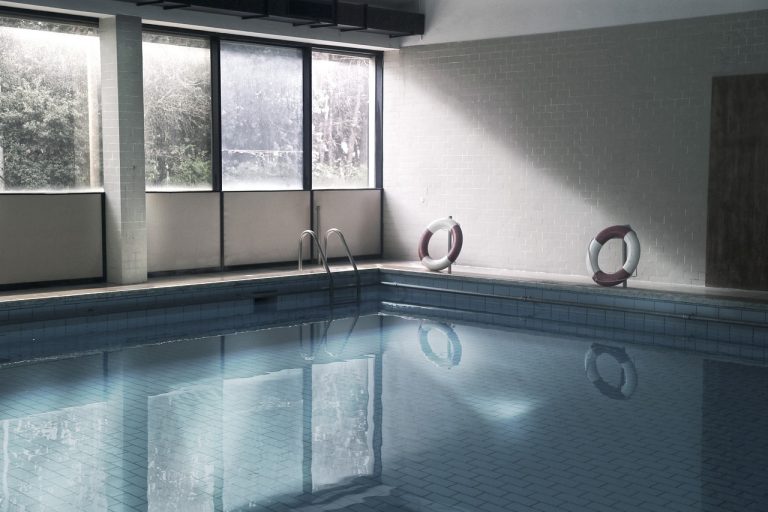DIY Pool Cleaning: Tools You Can’t Do Without

Table of Contents:
- Introduction
- Why DIY Pool Cleaning is Popular in Singapore
- Essential DIY Pool Cleaning Tools
3.1. Telescopic Pool Pole
3.2. Pool Skimmer Net
3.3. Pool Vacuum
3.4. Pool Brush
3.5. Water Test Kit
3.6. Automatic Pool Cleaner (Optional)
3.7. Algae Brush - Step-by-Step Guide to DIY Pool Cleaning
- DIY Pool Cleaning vs. Professional Services in Singapore
- Frequently Asked Questions (FAQs)
- Conclusion
1. Introduction
In Singapore, where year-round tropical weather makes pools a popular home feature, pool maintenance is a crucial task. DIY pool cleaning is a cost-effective approach that allows pool owners, tenants, and facility managers to keep their pools sparkling clean without relying solely on professional services. This article by Watercraft Engineering highlights the essential tools you need for effective DIY pool maintenance.
2. Why DIY Pool Cleaning is Popular in Singapore
Many homeowners and facility managers in Singapore prefer DIY pool cleaning because:
- Cost Savings: Regular DIY maintenance can reduce the need for expensive professional cleaning.
- Convenience: With the right tools, pool cleaning can be quick and straightforward.
- Control Over Chemicals: Allows pool owners to monitor and adjust chemical levels according to their preferences.
3. Essential DIY Pool Cleaning Tools
3.1. Telescopic Pool Pole
The telescopic pool pole is a versatile tool that serves as the backbone for several other pool cleaning attachments, such as the skimmer net, vacuum head, and pool brush. Adjustable in length, it helps reach all areas of the pool.
3.2. Pool Skimmer Net
A pool skimmer net attaches to the telescopic pole and is used to scoop out floating debris, such as leaves, twigs, and insects. Removing debris promptly prevents it from sinking to the bottom and causing water quality issues.
3.3. Pool Vacuum
A pool vacuum is essential for cleaning the pool floor and removing dirt, sand, and small debris that cannot be reached with the skimmer net. There are manual pool vacuums, which attach to the telescopic pole, and automatic options that move around the pool independently.
3.4. Pool Brush
The pool brush is another attachment for the telescopic pole, used to scrub the pool walls, tiles, and steps to remove algae and other buildup. A brush with nylon bristles is suitable for most pool surfaces, while a steel brush may be required for more stubborn stains on concrete pools.
3.5. Water Test Kit
Testing the pool’s water chemistry is crucial for maintaining a safe and clean swimming environment. A water test kit measures pH, chlorine levels, and alkalinity, allowing you to adjust chemical levels as needed.
3.6. Automatic Pool Cleaner (Optional)
Automatic pool cleaners, such as robotic pool cleaners, are convenient tools for those who want to automate the cleaning process. These devices navigate the pool on their own, scrubbing the walls and vacuuming debris, though they can be a pricier option.
3.7. Algae Brush
An algae brush with stainless steel bristles is ideal for scrubbing away tough algae growth. While a regular pool brush works well for routine cleaning, an algae brush is more effective for deep cleaning when algae starts to appear.
4. Step-by-Step Guide to DIY Pool Cleaning
- Start with the Skimmer Net: Remove floating debris from the pool’s surface using the skimmer net.
- Brush the Walls and Steps: Use a pool brush to scrub the walls, steps, and any areas where algae tend to form.
- Vacuum the Pool Floor: Clean the pool floor with a manual or automatic pool vacuum to remove dirt and sediment.
- Test the Water: Use a water test kit to check pH, chlorine, and alkalinity levels. Adjust the chemicals as needed to maintain proper balance.
- Clean the Pool Filter: Backwash or clean the pool filter regularly to ensure proper filtration.
Require more information? Here’s a comprehensive pool maintenance checklist to ensure that your pool is always in pristine condition.
5. DIY Pool Cleaning vs. Professional Services in Singapore
While DIY pool cleaning offers cost savings and convenience, there are times when professional services may be necessary, especially for:
- Major Cleaning: When the pool has been neglected for a long time or requires a deep clean.
- Complex Repairs: Professional help may be needed for issues with pool equipment or major water balance problems.
- Algae Infestations: Severe algae growth may require specialised treatment by professionals.
6. Frequently Asked Questions (FAQs)
Q: How often should I clean my pool in Singapore?
A: For optimal maintenance, pools should be skimmed daily, brushed and vacuumed weekly, and water chemistry tested at least twice a week.
Q: What is the most important tool for DIY pool cleaning?
A: The telescopic pole is arguably the most important tool, as it serves as the base for multiple cleaning attachments like the skimmer net, vacuum, and brush.
Q: Are automatic pool cleaners worth the investment?
A: While automatic pool cleaners can be expensive, they save time and effort by automating the cleaning process. They are especially useful for larger pools.
Q: Can I use household cleaning tools to clean my pool?
A: It is not recommended to use household tools for pool cleaning, as they may not be designed for underwater use and can damage the pool’s surface.
7. Conclusion
DIY pool cleaning in Singapore is a practical and rewarding approach to pool maintenance. With the right tools and regular upkeep, pool owners can ensure their swimming areas stay clean, safe, and inviting.
